- Home
- Peter Tremayne
The Shapeshifter's Lair
The Shapeshifter's Lair Read online
Table of Contents
Cover
Also by Peter Tremayne
Title Page
Copyright
Dedication
Epigraph
Principal Characters
Author’s Note
Chapter One
Chapter Two
Chapter Three
Chapter Four
Chapter Five
Chapter Six
Chapter Seven
Chapter Eight
Chapter Nine
Chapter Ten
Chapter Eleven
Chapter Twelve
Chapter Thirteen
Chapter Fourteen
Chapter Fifteen
Chapter Sixteen
Chapter Seventeen
Chapter Eighteen
Chapter Nineteen
Chapter Twenty
Chapter Twenty-One
Chapter Twenty-Two
Chapter Twenty-Three
Chapter Twenty-Four
Chapter Twenty-Five
Also by Peter Tremayne
The Sister Fidelma mysteries
WHISPERS OF THE DEAD
THE LEPER’S BELL
MASTER OF SOULS
A PRAYER FOR THE DAMNED
DANCING WITH DEMONS
THE COUNCIL OF THE CURSED
THE DOVE OF DEATH
THE CHALICE OF BLOOD
BEHOLD A PALE HORSE
THE SEVENTH TRUMPET
ATONEMENT OF BLOOD
THE DEVIL’S SEAL
THE SECOND DEATH
PENANCE OF THE DAMNED
NIGHT OF THE LIGHTBRINGER *
BLOODMOON *
BLOOD IN EDEN *
* available from Severn House
THE SHAPESHIFTER’S LAIR
Peter Tremayne
This ebook is copyright material and must not be copied, reproduced, transferred, distributed, leased, licensed or publicly performed or used in any way except as specifically permitted in writing by the publishers, as allowed under the terms and conditions under which it was purchased or as strictly permitted by applicable copyright law. Any unauthorised distribution or use of this text may be a direct infringement of the author’s and publisher’s rights and those responsible may be liable in law accordingly.
This first US edition published 2020
in the USA by
SEVERN HOUSE PUBLISHERS LTD of
Eardley House, 4 Uxbridge Street, London W8 7SY.
Trade paperback edition first published
in the USA 2021 by
SEVERN HOUSE PUBLISHERS LTD.
eBook edition first published in 2020 by Severn House Digital
an imprint of Severn House Publishers Limited
Copyright © 2020 by Peter Tremayne.
The right of Peter Tremayne to be identified
as the author of this work has been asserted
in accordance with the Copyright, Designs
& Patents Act 1988.
British Library Cataloguing in Publication Data
A CIP catalogue record for this title is available from the British Library.
ISBN-13: 978-0-7278-8964-5 (cased)
ISBN-13: 978-1-78029-732-3 (trade paper)
ISBN-13: 978-1-4483-0454-7 (e-book)
This is a work of fiction. Names, characters, places and incidents
are either the product of the author’s imagination or are used fictitiously.
Except where actual historical events and characters are being described
for the storyline of this novel, all situations in this publication are
fictitious and any resemblance to actual persons, living or dead,
business establishments, events or locales is purely coincidental.
This ebook produced by
Palimpsest Book Production Limited, Falkirk,
Stirlingshire, Scotland.
For Maria V. Soteriades
The years have passed and times have changed since 1969.
But our friendship has remained constant.
Thanks for being there.
Tiagaid thra in lucht sin isidaib. Ocus tiagaid fo muirib agis tiagaid i conrechtaibh ocus tiaigaid eo hamaide, ocu tiagait eo tuath clingtha. Is as sin is bunadas doibh uile, i muintir deamain.
Lebor Gabála Érenn
So they go in the currents of the wind. They go under the seas, they go in wolf-shapes and they go to fools and to the powerful. Thence is it that this is the nature of all of them, to be followers of the devil.
A Christian scribe’s notation in Lebor Gabála Érenn
PRINCIPAL CHARACTERS
Sister Fidelma of Cashel, a dálaigh or advocate of the law courts of 7th-century Ireland
Brother Eadulf of Seaxmund’s Ham, in the land of the South Folk of the East Angles, her companion
At Cashel
Colgú, King of Muman, Fidelma’s brother
Enda, warrior of the Nasc Niadh, warriors of the Golden Collar, the élite bodyguard to King Colgú
Missing in the mountains
Princess Gelgéis of Osraige
Spealáin, her steward
At the Abbey of the Blessed Cáemgen
Cétach, a pedlar arriving at the abbey
Abbot Daircell Ciotóg
Brother Aithrigid, his rechtaire or steward
Brother Dorchú, the dorseóracht or gatekeeper
Brother Lachtna, the physician
Brother Eochaí, the echaire or stable master
Brother Gobbán, the smith
Brother Cuilínn, a stable boy
At Láithreach
Iuchra, a soothsayer
Brehon Rónchú, a local judge, who is missing
Beccnat, a baran or steward judge, assistant to Brehon Rónchú
Serc, a prostitute
Síabair, the town’s physician
Teimel, a hunter and tracker
Muirgel, widow of Murchad, a boatman
At Sliabh Céim an Doire
Corbmac, commander of Dicuil Dóna’s warriors
At Ghleann Uí Máil
Dicuil Dóna, lord of The Cuala
Scáth, steward and son of Dicuil Dóna
Aróc, daughter of Dicuil Dóna
At Dún Árd
Garrchú, steward of the mines of The Cuala
Others mentioned
Brehon Brocc, the murdered Brehon
Alchú, son of Fidelma and Eadulf
Tuaim Snámha, petty King of Osraige from AD 660–678
Fianamail of the Uí Máil, King of Laigin from AD 666–680
AUTHOR’S NOTE
This story is set in AD 672, during the period known as Laethanta na Bó Riabhai (the days of the brindled cow), which corresponds to the last three days of March and the first three days of April in the modern calendar. The setting is the remote and forbidding peaks of The Cuala – today called the Wicklow Mountains – containing some of Ireland’s highest peaks and the island’s largest continuous upland.
It was here that the Annales Ríoghachta Éireann (Annals of the Kingdom of Ireland) stated that in The Age of the World 3656, during the reign of the High King, Tigernmas, gold was first found and smelted in a wooded glen east of the River Liffey by Uchadan, the smith, of the Fear Cualann, the men of The Cuala. Tigernmas, son of Fothal mac Ethriel, was said to rule in 1621–1544 BC, and is recorded as being killed during a wildly abandoned orgy to Crom Cruach, a gold pagan idol, whose cult demanded human sacrifice during the feast of Samhain. Could this have been a symbolic warning about the effect of greed for gold and power on men and women?
Gold has certainly long been used by the smiths of Ireland. One gold collar, known as the Blessington Lunala, shaped like a crescent moon, is genera
lly dated 2400–2000 BC. Blessington stands at the edge of The Cuala. The Broighter gold hoard is dated to the 1st century BC. Gold was even discovered in the 18th century AD in the foothills of these same Wicklow Mountains at Croghan, Kinshela, where a stream was afterwards named Gold River.
To help people with locations a sketch map is included. The Abbey of the Blessed Cáemgen at Gleann Dá Loch (today Anglicised as Glendalough) is ‘the valley of the two lakes’. The abbey was founded by Cáemgen (Saint Kevin) a century before these events. The forbidding mountain of Log na Coille (Anglicised as Lugnaquilla), ‘the mountain of the wood’, is the fourth highest peak standing at 905 metres. Nearby is Mullach Cliabháin (Anglicised as Mullagh Cleevaun) or ‘the summit of the cradle’, which stands at 849 metres and is the eighth highest mountain in Ireland.
Readers may wish to know that the background details of the clash in Durlus Éile and Osraige, mentioned in this story, are recounted in The Seventh Trumpet (2012). How Fidelma resolved the relationship she had as a student is told in Act of Mercy (1999). The rescue of Eadulf from execution in Laigin occurs in Our Lady of Darkness (2000). The incident of how Fidelma defended her friend Liadin, charged with murdering her husband, occurs in the short story ‘At the Tent of Holofernes’, collected in Hemlock at Vespers: A Collection of Sister Fidelma Mysteries (2000).
ONE
Abbot Daircell raised his head from the manuscript that he was copying. Had he not been a religious man, he might have uttered a profanity. That he thought it brought a moment of guilt to his conscience. As a result, he pressed his thin lips in a tight grimace before shouting sternly to his steward. The fact that he even raised his voice to a pitch that echoed from the small scriptorium, in which he was working in isolation, to reach the ears of his steward in the adjacent chamber, demonstrated the irritated mood of the abbot.
‘Brother Aithrigid, for the love of God, find out who is making that unholy clamour and tell them to desist!’
The clamour was the constant pealing of the bell at the gates of the abbey to announce the arrival of wayfarers and guests of importance. Generally such visitors were few and far between because the lonely abbey in the Valley of the Two Lakes was not on any major route between settlements among the tall mountains that surrounded it. It was not just the pealing of the bell that aggravated the abbot, however, but its frenetic, almost panic-inducing sound, and the fact that Brother Dorchú, the abbey’s dorseóracht, or gatekeeper, had apparently not responded to its summons. The abbot decided that unless Brother Dorchú had a pressing reason for his lack of diligence, his penance would not be a light one. He had been accepted into the abbey only a year before, having abandoned service as a bodyguard to the lord of The Cuala, the noble who ruled the mountainous territory in which the abbey was sited. The abbot had made Brother Dorchú the gatekeeper because he felt a former warrior would be best suited as a protector of the entrance to the abbey. Abbot Daircell sat back and scowled, making his hawk-like features more forbidding as he heard the hurried slapping of leather-soled sandals across the stone-flagged floor as the steward went off on his errand. Indeed, it was only a short while before the gate bell sounded a few hesitant, isolated notes and fell silent.
Abbot Daircell gave a sigh of relief and turned back to the manuscript page he had been contemplating. He tried to regain his concentration but his mood had changed. It was hard enough to decipher the Latin characters of the letter he had received from Abbot Failbe mac Pipáin of Iona, let alone the arguments in favour of the methods of Rome in their new computing of the Paschal celebrations. However, the complex arguments, which Abbot Failbe favoured, were beyond him. He had long ago admitted that he was neither astronomer nor mathematical scholar, nor had knowledge enough to approve or disapprove of such radical changes to the calendar. Had not the Blessed Augustine of Hippo once dismissed such matters in a letter, stating the Holy Spirit had wanted to create Christians, not mathematicians? He sighed once more and pushed the paper away.
At that moment he heard his steward hurrying back, the slap of his sandals now sounding as frantically as had the ringing of the bell. To the abbot’s surprise, the scriptorium door burst open. Framed in the doorway was not his steward but a tall youth whose robes did not disguise his tough muscular form. Abbot Daircell stared in surprise. Above all rules, the brethren were taught respect and decorum; to pause outside the abbot’s chambers and knock thrice, before entering once permission was given. Abbot Daircell’s face darkened in annoyance, trying to remember the name of the boy. It was one of the stable lads, recently joined. Before he could utter the admonishment, the youth seemed to recover his breath.
‘The steward sent me,’ he gasped. ‘A man … a man …’ he began to stutter. ‘A man at the gate …’
Abbot Daircell paused, suppressing his inclination to reprove the youth. He remembered his name now.
‘Calm yourself, Brother Cuilínn. So, there is a man at the gate? I hardly thought it was a straying sheep that would ring the gate bell in such agitation.’ Abbot Daircell admitted to favouring irony in his speech. ‘Tell me, who is this man and what does he seek here?’
Brother Cuilínn swallowed, still breathless from running with his message.
‘It is a pedlar. Brother Aithrigid told me to tell you that it is Cétach the pedlar.’
Abbot Daircell’s frown deepened. He knew Cétach and his reputation. He was a trader from the local township with a reputation for cunning. He was deemed both disingenuous and untrustworthy but the Abbey occasionally did business with him.
‘And so? Why does Cétach the pedlar come and announce himself in such an unusual and conceited manner by ringing our gate bell as if to wake the dead for the Day of Judgment? Does he bring some news of importance? And do you know why our gatekeeper was unable to answer the summons of the bell?’
The young boy was still standing, hesitating, and the abbot grew impatient.
‘Speak,’ he instructed sternly. ‘Do I have to repeat myself? Does the pedlar bring some news? He is not a person that I would welcome here at the best of times – a man of little worth and even less religion – but if he brings news …?’
The stable boy’s expression and voice remained agitated. ‘He brings a body, Father Abbot. The steward, Brother Aithrigid … he … er … requests that you examine it.’
‘A body? He requests that I …?’ Abbot Daircell hesitated, holding his temper as he realised that the boy was only the conveyor of a message.
He rose abruptly from his chair without another word and preceded the youth from the scriptorium, making his way through the abbey buildings, across the expanse of ground towards the inner gate. This gate stood before a wooden bridge, which crossed a stream to a second gate, which was the main gate of the abbey complex.
Outside this gate, the short and portly figure of Cétach stood by a mule cart, twisting the reins of the animal in his nervous hands. Cétach was a man of unprepossessing appearance. The hair on his forehead was receding, but grew dirty red, soiled and matted at the back. His beard was ample but also thick and dirty, and what little that could be seen of his cheeks was coarse and ruddy. He lowered his head in deference as the abbot approached.
‘What is all this nonsense I hear, Brother Aithrigid?’ Abbot Daircell demanded, ignoring the pedlar and speaking directly to his steward. ‘I am told that you request that I look at a body.’
Brother Aithrigid was a tall, elderly, silver-haired man. He was softly spoken and exuded calmness in the face of all excitement. Before joining the abbey, Abbot Daircell knew Brother Aithrigid had once trained in law. Although he had not reached the highest qualification, he was at the level of an Aire Árd, one skilled in the preparations of judgments. In this capacity he handled the abbey’s legal affairs.
His voice was almost pacifying as he replied: ‘I think the pedlar should explain. It is he who brought the body here.’
As Abbot Daircell turned to Cétach, the pedlar began speaking in a soft whining manner.
�
��If it pleases you, Lord Abbot, I brought it here as quickly as I could and—’
Abbot Daircell held up his hand as the man seemed about to plunge on.
‘You brought a body here? Where did you find this body?’
‘Not far away. I was coming through the mountains, following the river through the valley of Glasán. It was there, at the pass of the oak wood, near the track where you begin to ascend the mountain to the summit to the Lake of the Water Monster … That’s where I found it …’
‘But why bring it here? Why not stop and bury the body? To come here is surely a deviation of your route, as I assume you would be heading to your home in Láithreach … or did you think this body stood in need of a special ecclesiastical ceremony and burial?’
Once more Abbot Daircell could not prevent his irony rising.
‘I did, Lord Abbot,’ replied the pedlar.
The abbot stood staring at him in surprise; he had expected some denial.
‘Why so?’ he demanded when he had recovered.
‘I thought you might also feel some recompense was due for my trouble.’
The abbot knew that Cétach was a man of few morals, earning what he could by guile and cunning, but even so, it was astounding that he would expect some sort of reward for bringing a body to the abbey.
‘Why should I give you a reward for bringing a body to me?’ the abbot demanded.
Cétach, in spite of his tough, rugged appearance, almost simpered.
‘I recognised the body as one of a party that had left Durlus Éile several days ago. I knew then that they were on their way here.’
There was a silence. A shadow crossed the abbot’s features.
‘On their way here from Durlus Éile?’ the abbot repeated quietly. Durlus Éile was a few days’ ride away on the western side of the high peaks, a small trading township in the petty kingdom of Osraige, outside the borders of the kingdom of Laigin, in which the abbey lay.

 The Shapeshifter's Lair
The Shapeshifter's Lair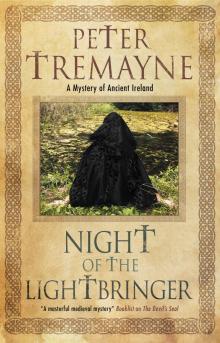 Night of the Lightbringer
Night of the Lightbringer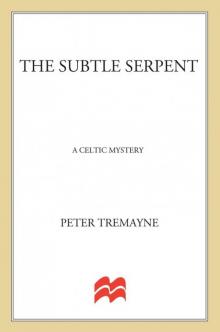 The Subtle Serpent
The Subtle Serpent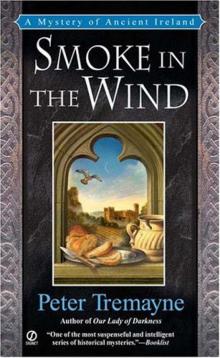 Smoke in the Wind
Smoke in the Wind Island of Shadows
Island of Shadows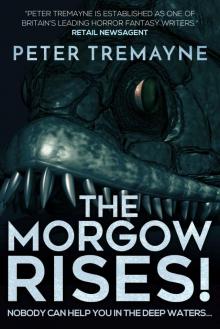 The Morgow Rises!
The Morgow Rises!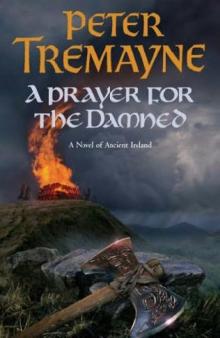 A Prayer for the Damned sf-17
A Prayer for the Damned sf-17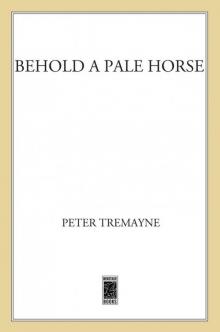 Behold a Pale Horse
Behold a Pale Horse Shroud for the Archbishop
Shroud for the Archbishop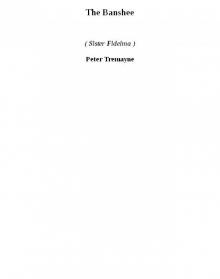 The Banshee (sister fidelma)
The Banshee (sister fidelma)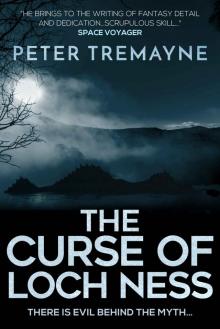 The Curse of Loch Ness
The Curse of Loch Ness Whispers of the Dead
Whispers of the Dead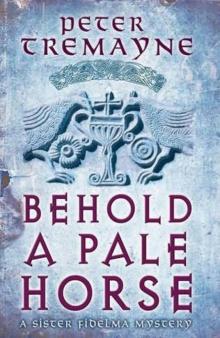 Behold a Pale Horse sf-22
Behold a Pale Horse sf-22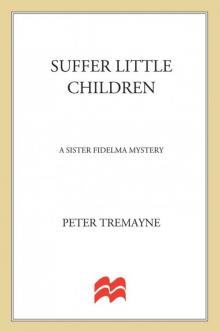 Suffer Little Children
Suffer Little Children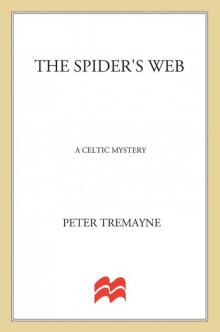 The Spider's Web
The Spider's Web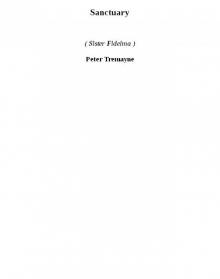 Sanctuary (sister fidelma)
Sanctuary (sister fidelma) Penance of the Damned (Sister Fidelma)
Penance of the Damned (Sister Fidelma)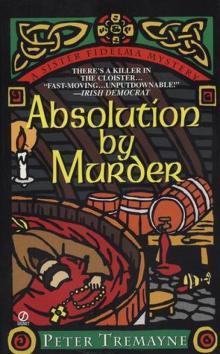 Absolution by Murder
Absolution by Murder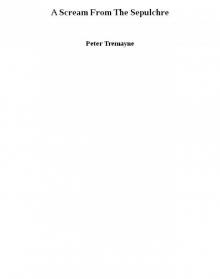 A Scream From The Sepulchre
A Scream From The Sepulchre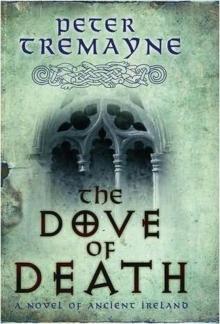 The Dove of Death sf-20
The Dove of Death sf-20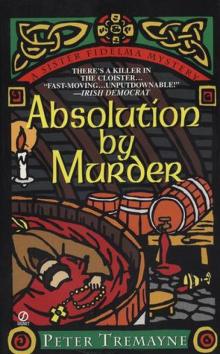 Absolution by Murder sf-1
Absolution by Murder sf-1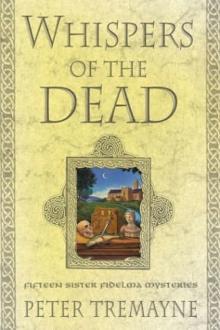 Whispers of the Dead sf-15
Whispers of the Dead sf-15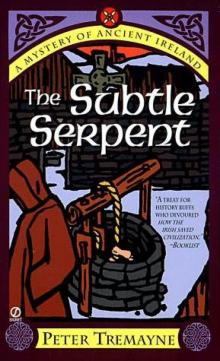 The Subtle Serpent sf-4
The Subtle Serpent sf-4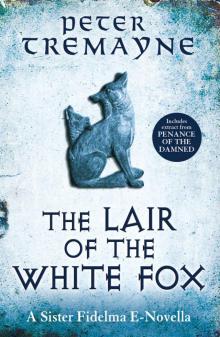 The Lair of the White Fox (e-novella) (Kindle Single)
The Lair of the White Fox (e-novella) (Kindle Single) Badger's Moon sf-13
Badger's Moon sf-13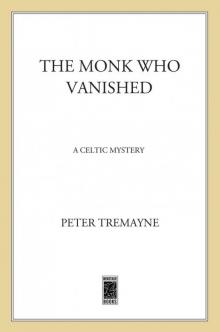 The Monk Who Vanished
The Monk Who Vanished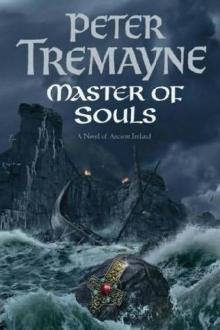 Master of Souls sf-16
Master of Souls sf-16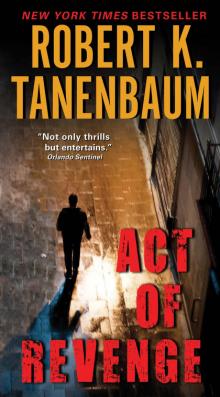 Act of Mercy sf-8
Act of Mercy sf-8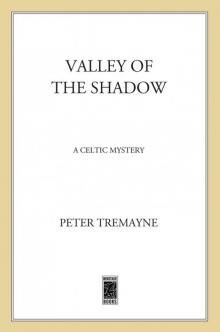 Valley of the Shadow
Valley of the Shadow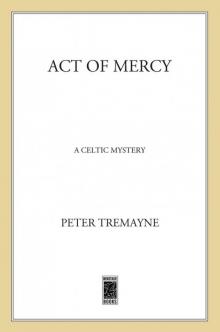 Act of Mercy
Act of Mercy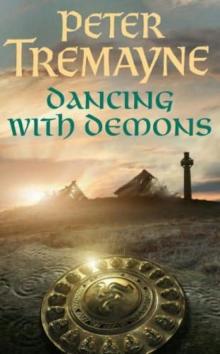 Dancing With Demons sf-18
Dancing With Demons sf-18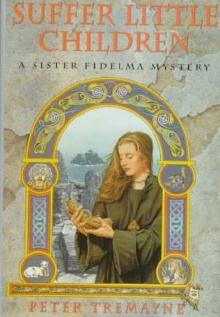 Suffer Little Children sf-3
Suffer Little Children sf-3 The Leper's Bell
The Leper's Bell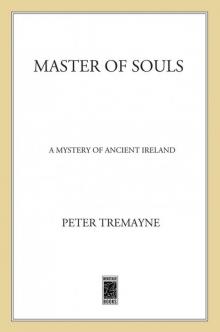 Master of Souls
Master of Souls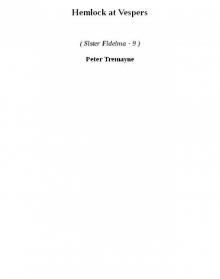 Hemlock at Vespers sf-9
Hemlock at Vespers sf-9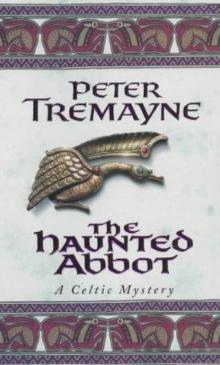 The Haunted Abbot sf-12
The Haunted Abbot sf-12 23- The Seventh Trumpet
23- The Seventh Trumpet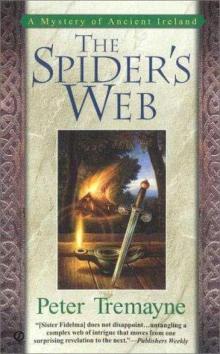 The Spider's Web sf-5
The Spider's Web sf-5 Valley of the Shadow sf-6
Valley of the Shadow sf-6 Bloodmoon
Bloodmoon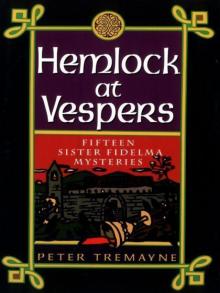 Hemlock at Vespers: Fifteen Sister Fidelma Mysteries
Hemlock at Vespers: Fifteen Sister Fidelma Mysteries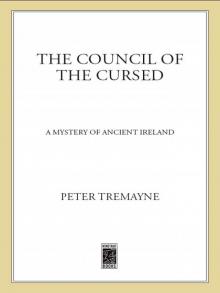 The Council of the Cursed
The Council of the Cursed The Dove of Death
The Dove of Death The Leper's bell sf-14
The Leper's bell sf-14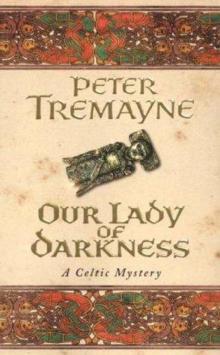 Our Lady of Darkness sf-10
Our Lady of Darkness sf-10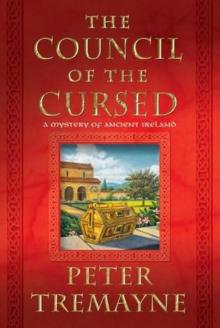 The Council of the Cursed sf-19
The Council of the Cursed sf-19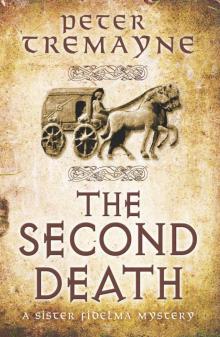 The Second Death (Sister Fidelma Mysteries)
The Second Death (Sister Fidelma Mysteries)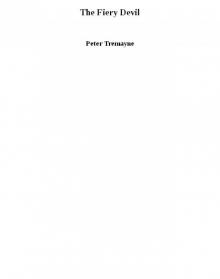 The Fiery Devil
The Fiery Devil Dancing With Demons
Dancing With Demons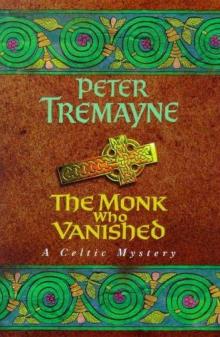 The Monk Who Vanished sf-7
The Monk Who Vanished sf-7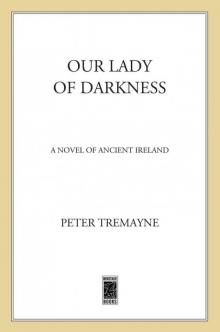 Our Lady of Darkness
Our Lady of Darkness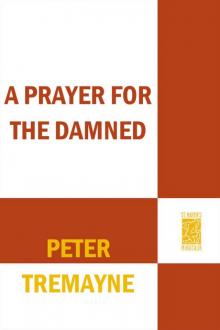 A Prayer for the Damned
A Prayer for the Damned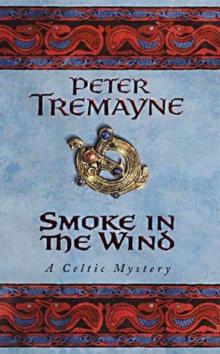 Smoke in the Wind sf-11
Smoke in the Wind sf-11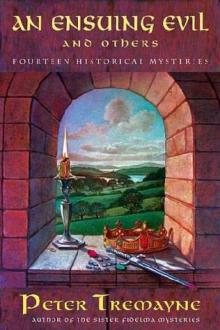 An Ensuing Evil and Others
An Ensuing Evil and Others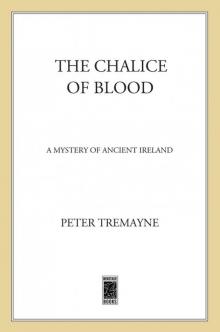 Chalice of Blood
Chalice of Blood